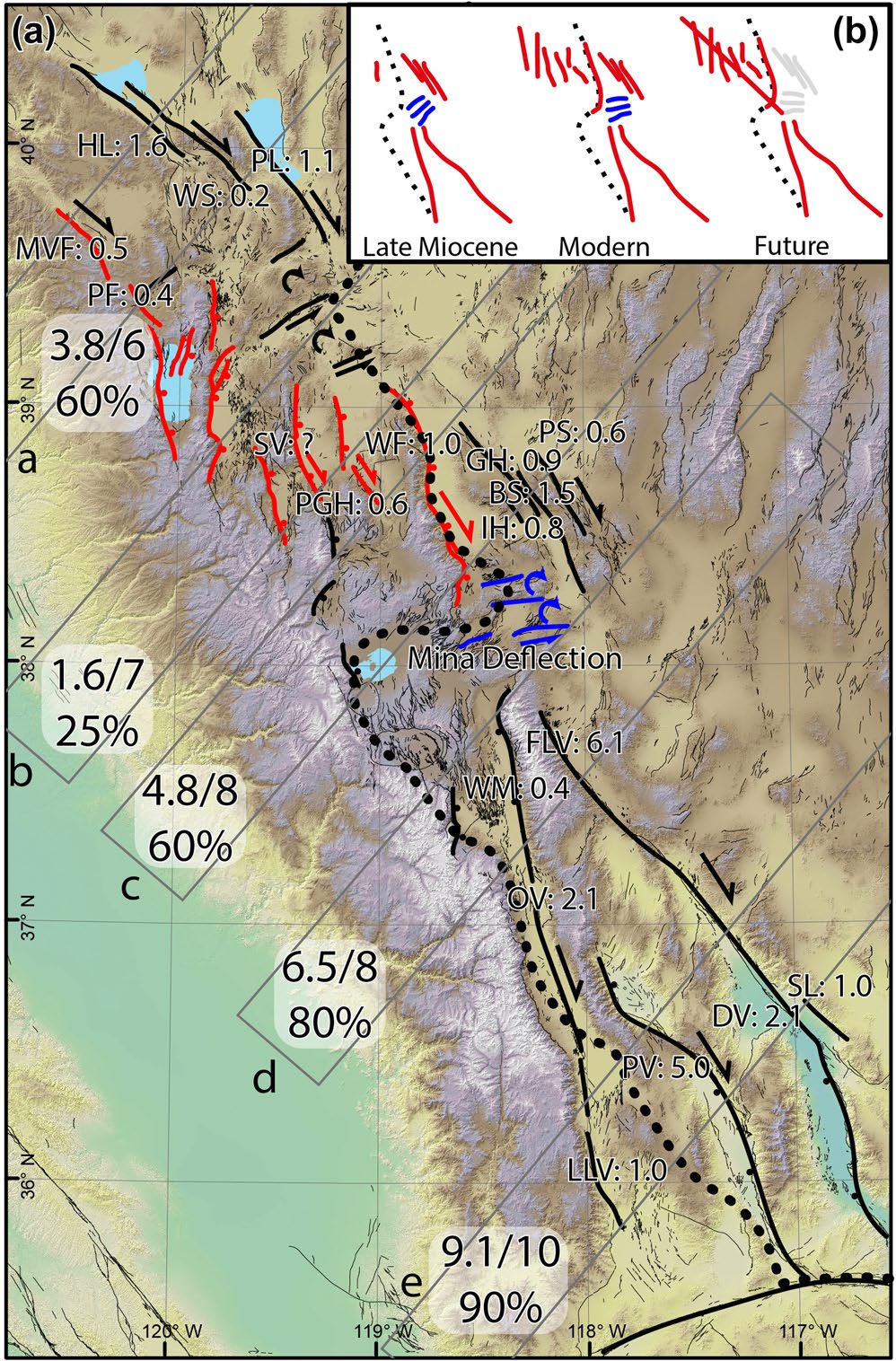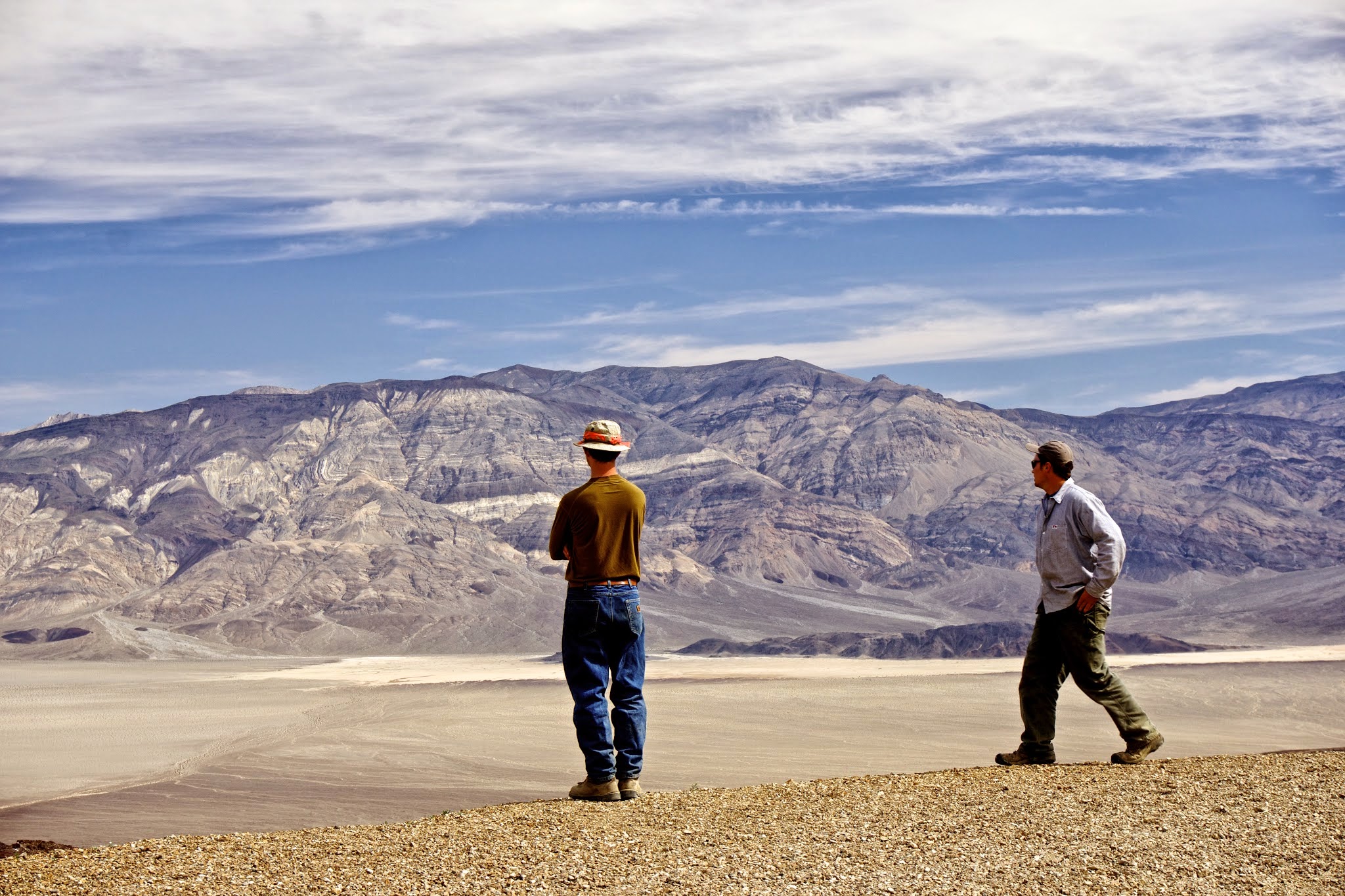Walker Lane


Rates of fault slip derived from geologic measurements form the underpinnings of most seismic hazard models. One simple check of the validity of geologic measurements is to compare them to independently determined geodetic rates measured either with dense GPS networks or from repeat satellite imaging. In some parts of the world, my work shows that these measurements generally agree (Li et al., 2021), but what does it mean when they disagree? East of the San Andreas fault, significant distributed shear deformation is accommodated by the Walker Lane tectonic belt, yet here only a small fraction of geodetically observed shear can be accounted for by known faults (Pierce et al., 2021). After careful analysis of this region, including using lidar and UAV imagery to map faults and applying cosmogenic, luminescence, and radiocarbon dating to measure rates of fault motion and landscape development, I determined that shear through this part of the fault system cannot be accounted for using the typical geologic understanding of faults. Instead of occurring on clearly definable well developed faults, earthquakes here are anticipated to rupture with complex patterns composed of numerous small distributed fault segments and significant off fault deformation, consistent with several recent and historical examples of earthquakes in the region (Koehler et al., 2020). This result implies that geodetic measurements of strain rate may be more reliable metrics of seismic hazards in regions of highly distributed faulting like this. My ongoing research focuses on documentation of other prehistoric examples of cryptic earthquakes in this region to improve our understanding of how distributed smaller structures might work together to produce large earthquakes, ultimately challenging the definition of what makes a seismogenic fault.
Read more
- Pierce, I.K.D., Wesnousky, S.G., Owen, L.A., Bormann, J.M., Li, X., Caffee, M., 2021. Accommodation of Plate Motion in an Incipient Strike-Slip System: The Central Walker Lane. Tectonics 40, e2019TC005612. https://doi.org/10.1029/2019TC005612
- Koehler, R.D., Dee, S., Elliott, A., Hatem, A.E., Pickering, A., Pierce, I., Seitz, G., 2020. Field response and surface rupture characteristics of the 2020 Mw6.5 Monte Cristo Range earthquake, central Walker Lane, Nevada. Seismol. Res. Lett.
- Li, X., Pierce, I.K.D., Bormann, J.M., Hammond, W.C., Zhang, Z., Li, C., Zheng, W., Zhang, P., 2021. Tectonic Deformation of the Northeastern Tibetan Plateau and Its Surroundings Revealed With GPS Block Modeling. J. Geophys. Res. Solid Earth 126, e2020JB020733. https://doi.org/10.1029/2020JB020733
